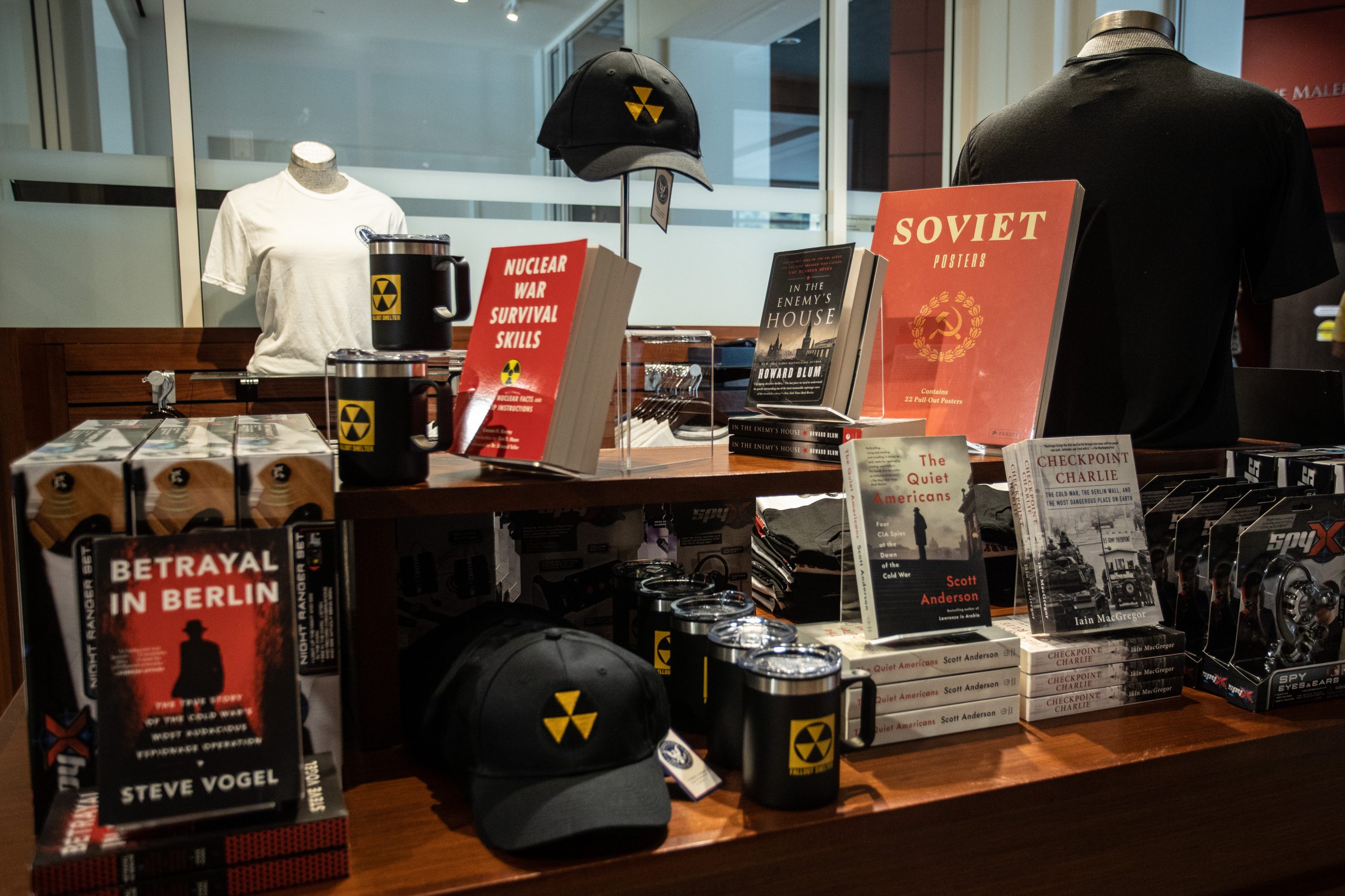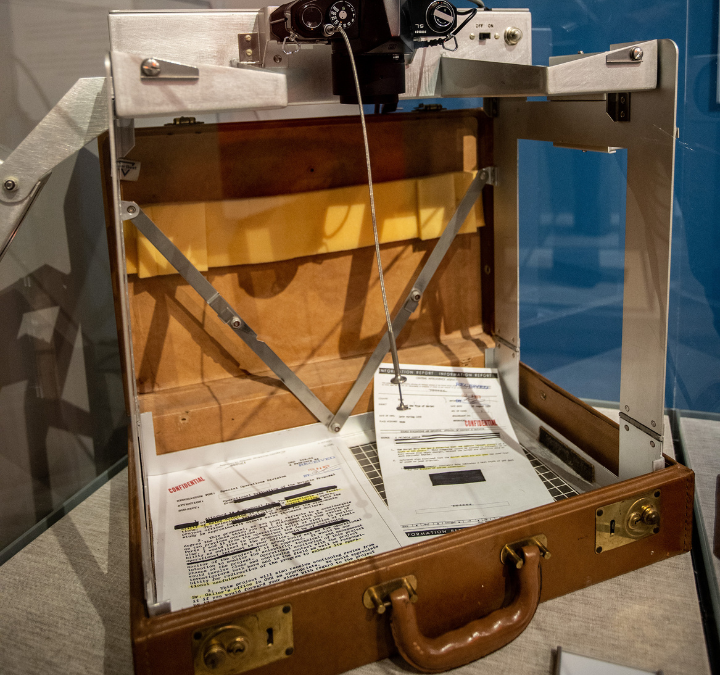First glance at the spy section in Cold War: Soviets, Spies and Secrets might have visitors thinking they are looking at props straight from the movie screen as maybe the creative work of Q, the gadget inventor for the fictional spy James Bond, but they are actual authentic spy tools used by the CIA and on-loan from some of the leading institutions in the US dedicated to preserving the history of spycraft in America.
From everyday items with hidden compartments to high-tech cameras, these artifacts highlight the important and, often dangerous, work of collecting information during the Cold War. Viewing these creative tools of spycraft emphasizes the adage that the truth is stranger than fiction.
From the International Spy Museum
A CIA Photo Briefcase, on loan from the International Spy Museum, gives insight into the way CIA operatives in the mid-late 20th century gathered information. While the briefcase looks normal from the outside, it opens to reveal a hidden Honeywell Pentax camera with a stand for taking photographs of confidential documents.
Taking normal, everyday objects and adding a secret compartment is tradecraft for both spy amateurs and professionals known as “active concealment.” The exhibit features a CIA table radio, circa 1970, with a concealed camera hidden behind the speaker and a CIA shaving cream can, circa the 1950’s-1970s, with a bottom that unscrews to reveal a secret compartment. Just imagine what can be hiding in plain sight.
From the CIA Museum
A visit to Cold War: Soviets, Spies and Secrets provides a rare opportunity to see artifacts on loan from the CIA Museum, which is not open to the public due to its location at the CIA headquarters in Langley, Virginia.
View a Minox C Camera, once known as the world’s most widely used spy camera. This subminiature camera, smaller than a modern iPhone, could take high-quality photographs of documents at close range, making it ideal for secret photography.
Items that normally would not receive a close look are perfect candidates for active concealment and the cemetery spike in the exhibit is a perfect example. It is actually a dead drop spike with a removable top that pulls off to reveal a hidden compartment for top secret information to be inconspicuously exchanged.
Placing the Artifacts in Context: The Formation of the CIA During the Cold War
Prior to World War II there was no central organization to coordinate American intelligence activities. After the United States entered the war, President Franklin D. Roosevelt established the Office of Strategic Services (OCC), centralizing, for the first time in American history, intelligence gathering and analysis.
At the end of the war in 1945 President Harry Truman abolished the OSS along with other agencies created during the war. But the need to bring foreign intelligence operations into one agency was apparent.
In 1947, Truman signed the National Security Act of 1947, establishing the Central Intelligence Agency (CIA). The CIA was required to conduct its intelligence gathering efforts outside the United States. It was forbidden from conducting intelligence gathering domestically.
Throughout the Cold War the CIA played an important role in gathering intelligence from around the world. Its methods were, at times, controversial. But the information it gathered in foreign countries helped guide the foreign and military policy of every Cold War-era president.
Spying: Espionage is a Dangerous Business
One-hundred-thirty-seven stars are carved into a marble wall at the headquarters of the Central Intelligence Agency.
Each star honors the life and service of a CIA officer who died while engaged in the field of intelligence in the service of our country.
Underneath the stars is a book.
On the pages of the book are inscribed some of the names of those who made the ultimate sacrifice. To protect intelligence sources and methods, certain names remain classified and are not shown in the book.
New CIA officers take their oath of office on their very first day at the Agency in front of the Memorial Wall. This sobering ceremony reminds the new officers of the risks that accompany a career in intelligence.
Cold War: Soviets, Spies and Secrets is included with admission to the Nixon Library. The Nixon Library is open seven days a week from 10 AM to 5 PM.

After touring Cold War: Soviets, Spies and Secrets, make sure to stop by the The Nixon Library gift store now featuring spy kits, books about espionage during the height of the Cold War and other exhibit-related memorabilia.
Nixon Library admission is $25 for adults, $21 for seniors, $19 for high school and college students, $19 for retired military, active military are free, children 5-11 for $15 and children 4 and under are free.
Nixon Foundation Members enjoy complimentary admission to the exhibit as part of their membership benefits.

